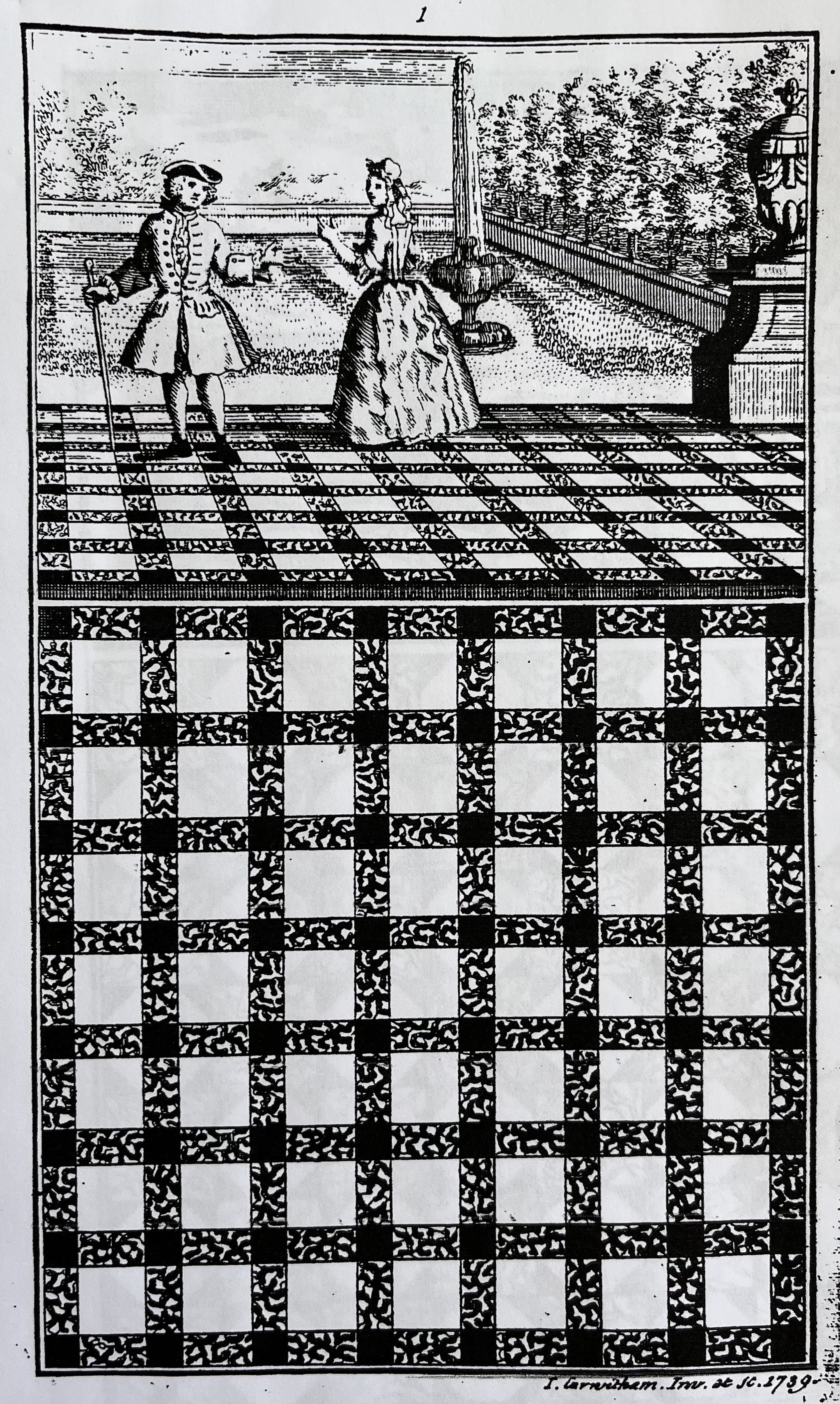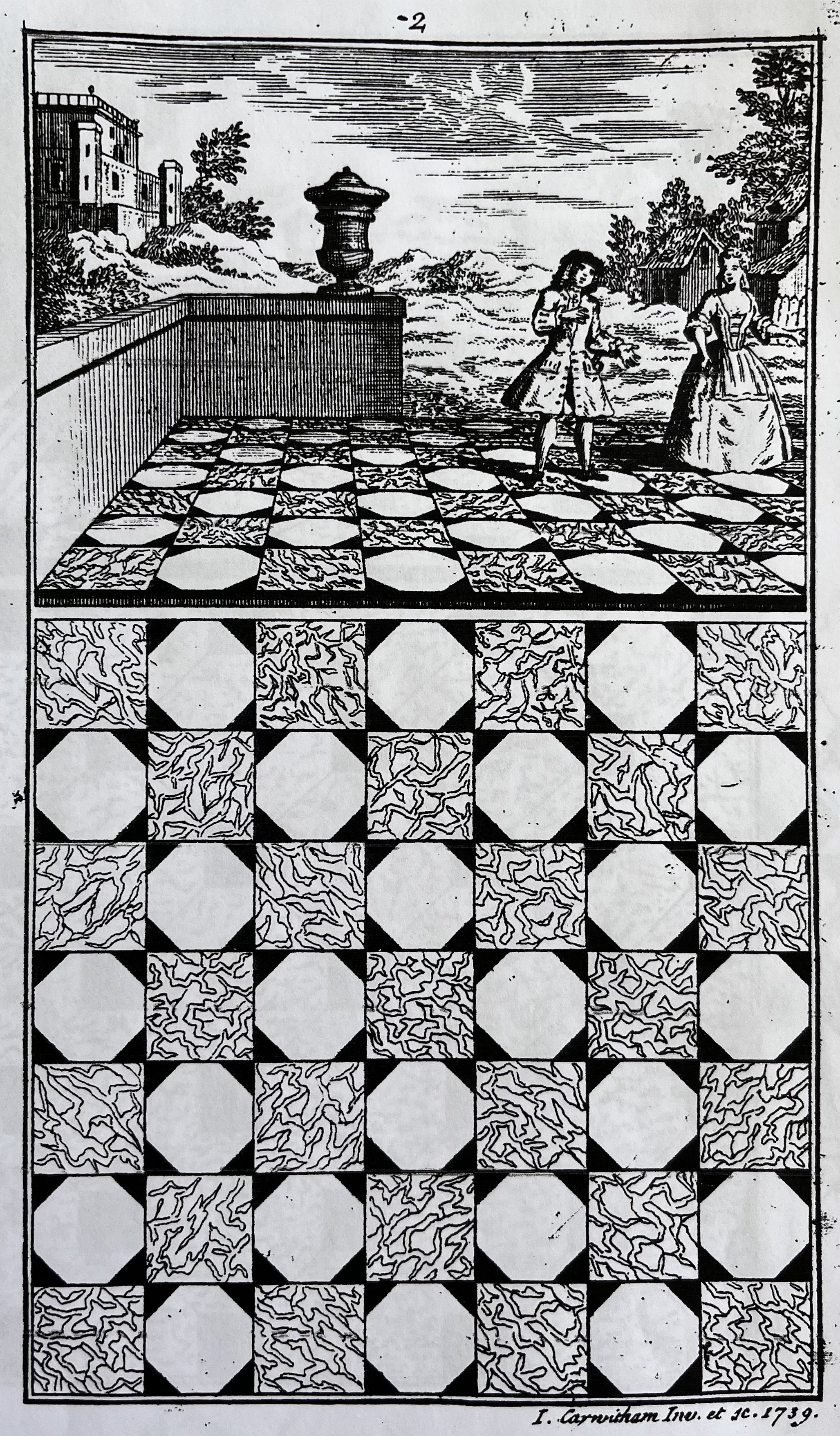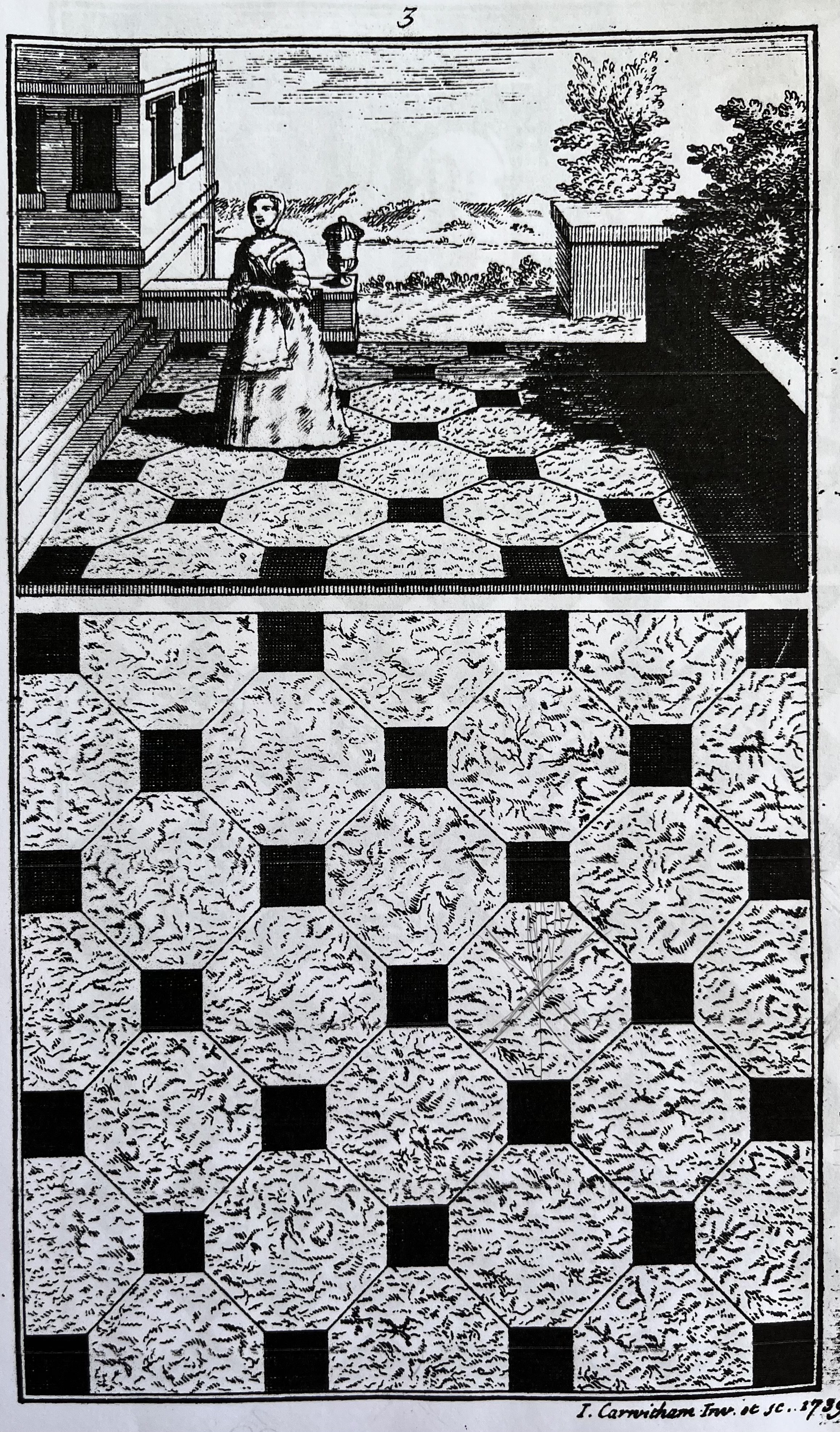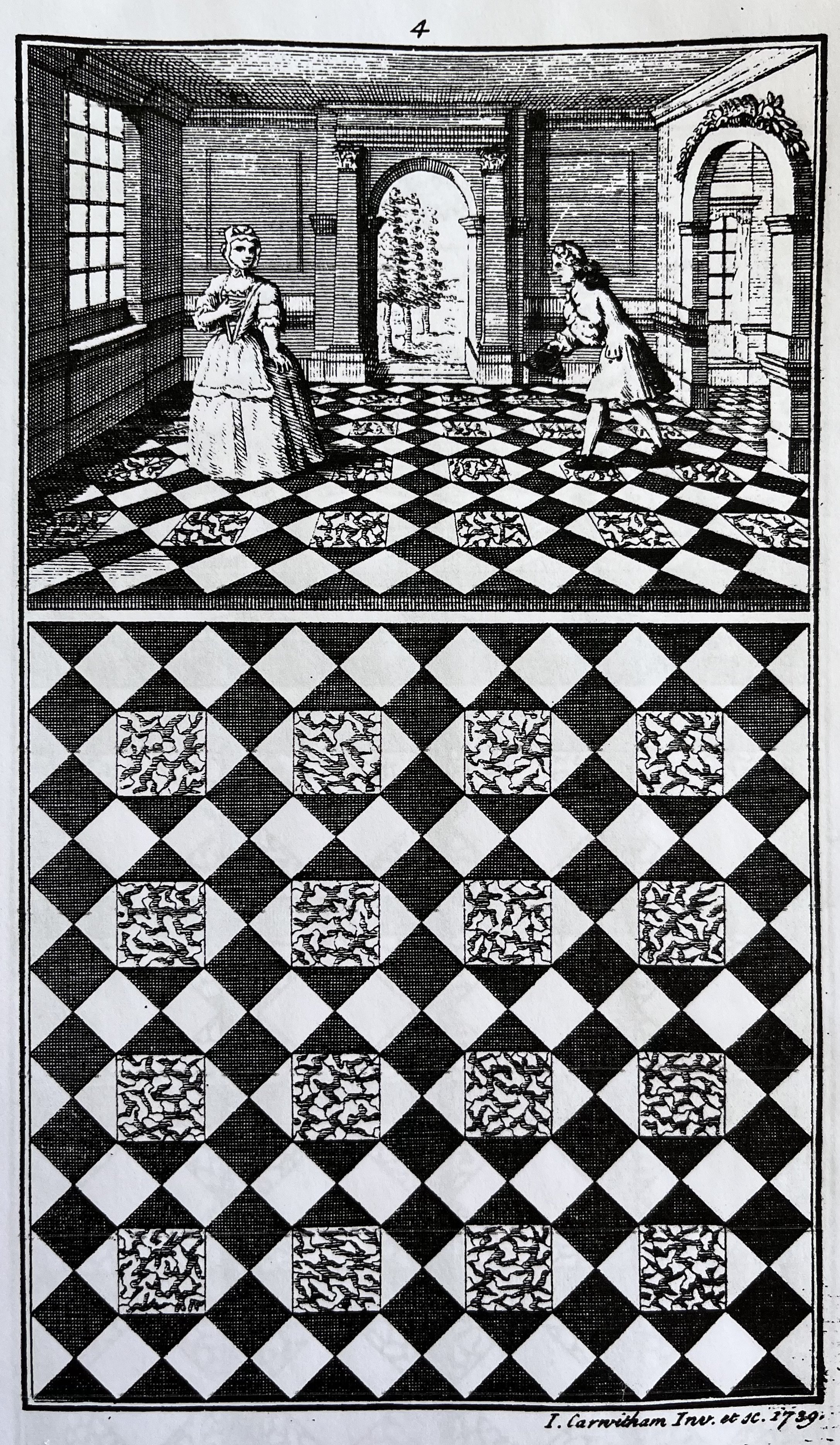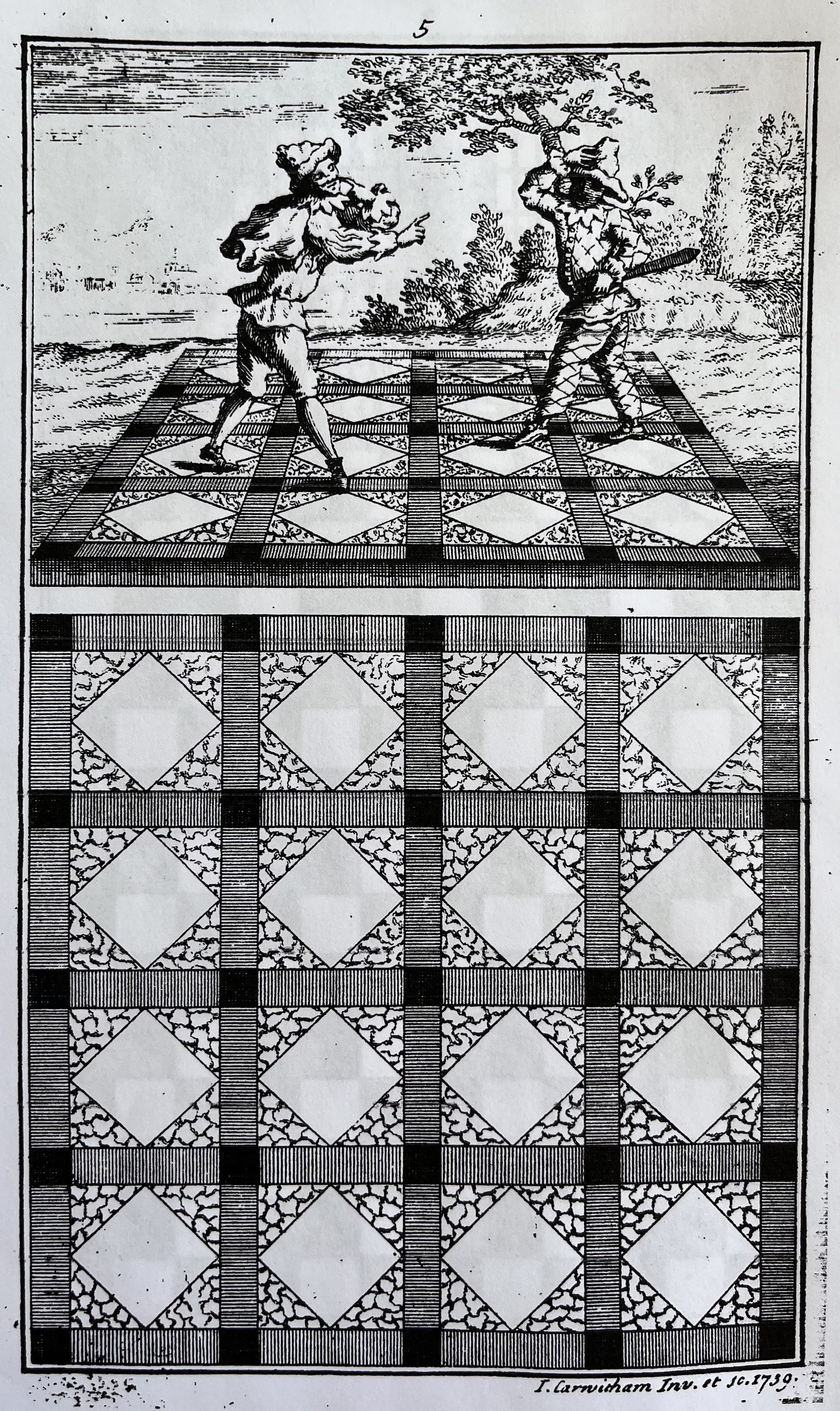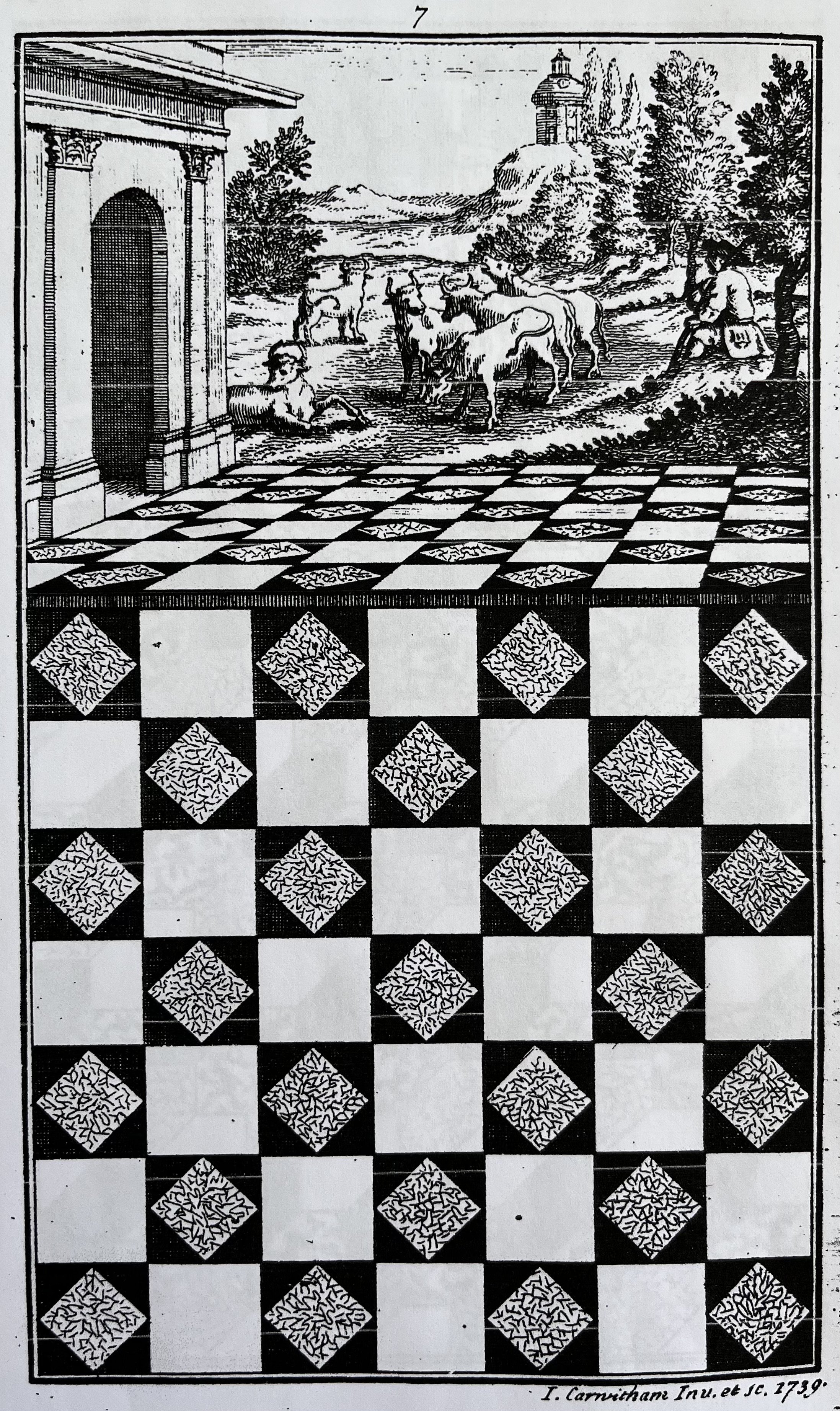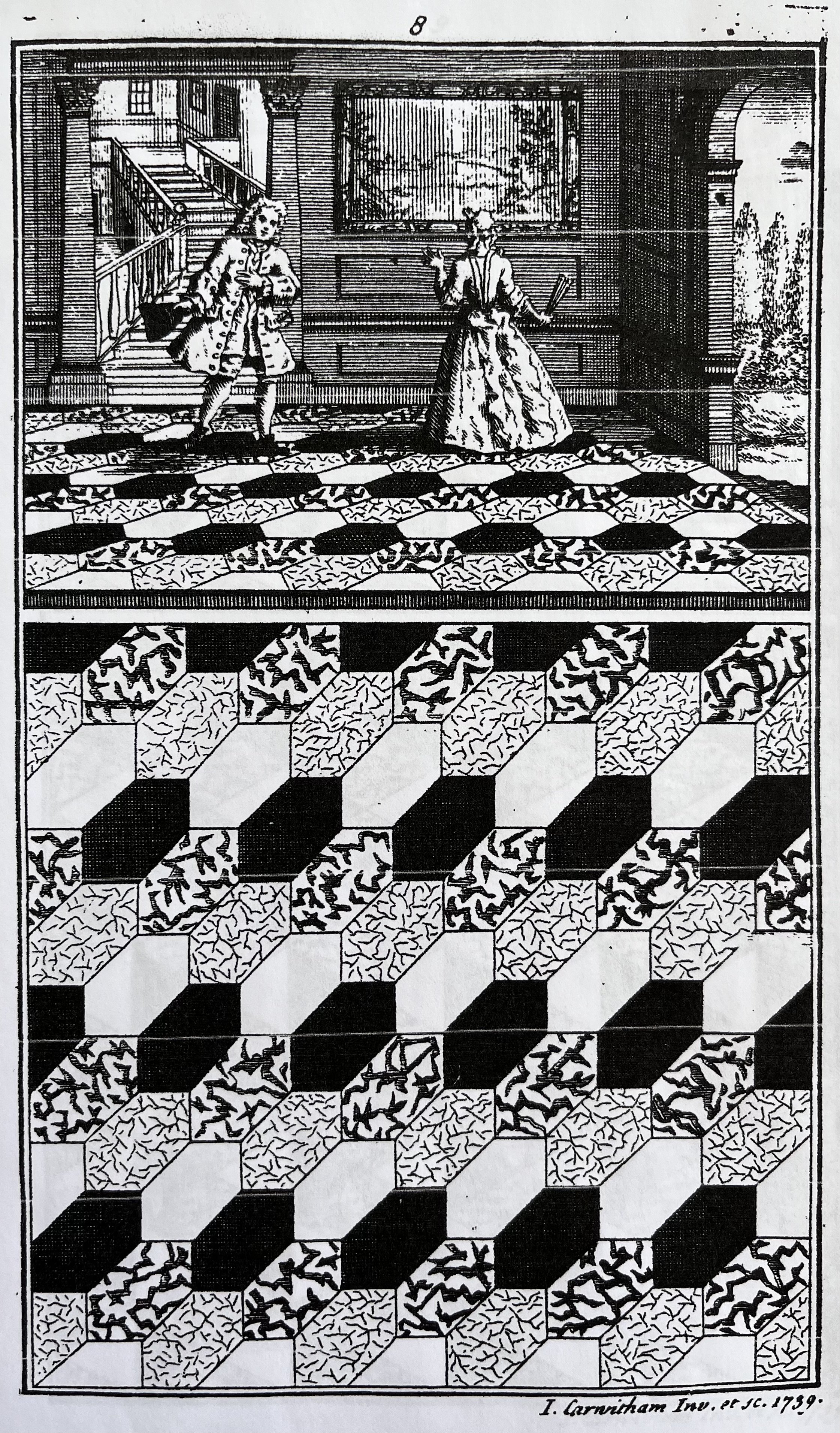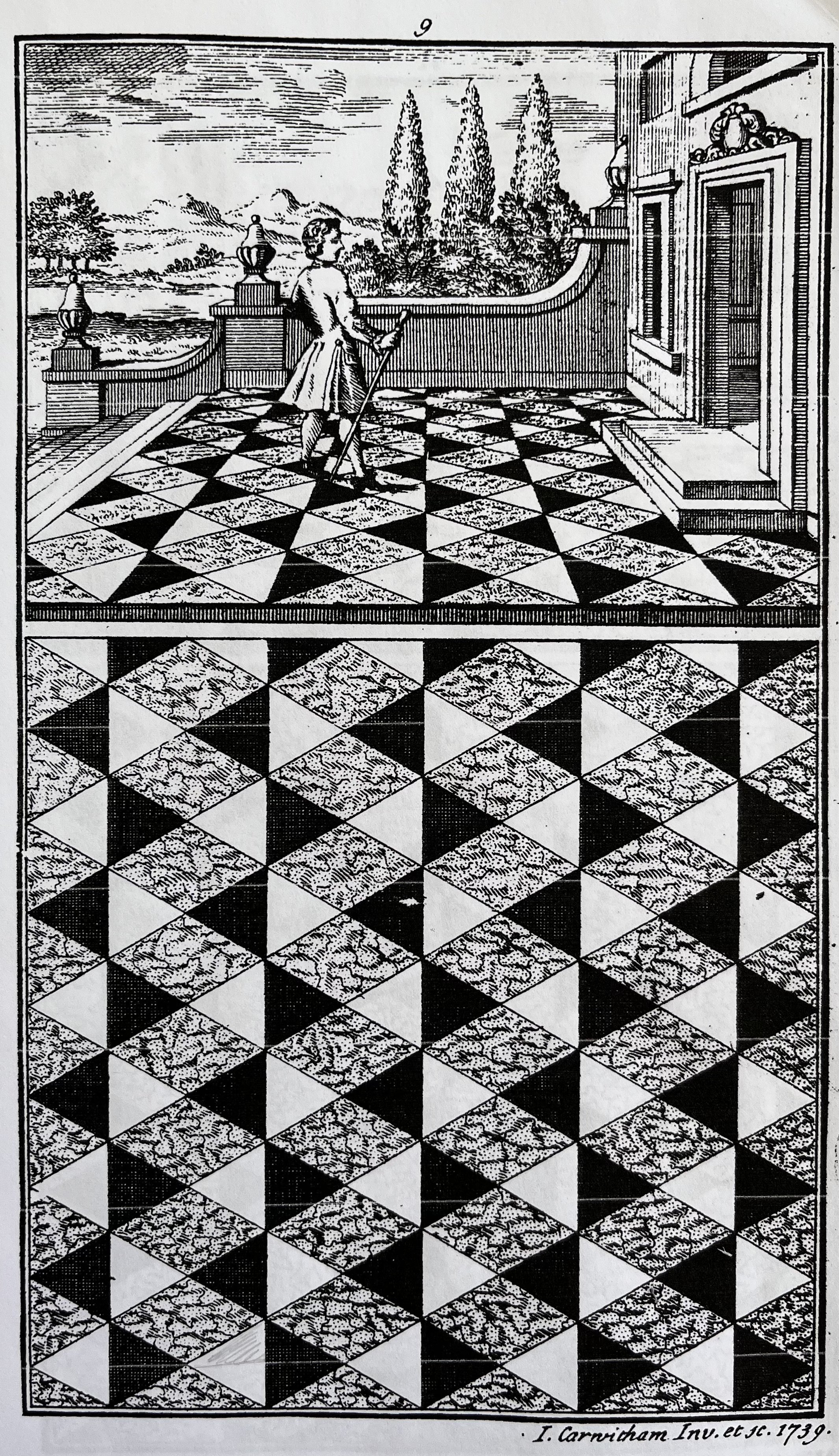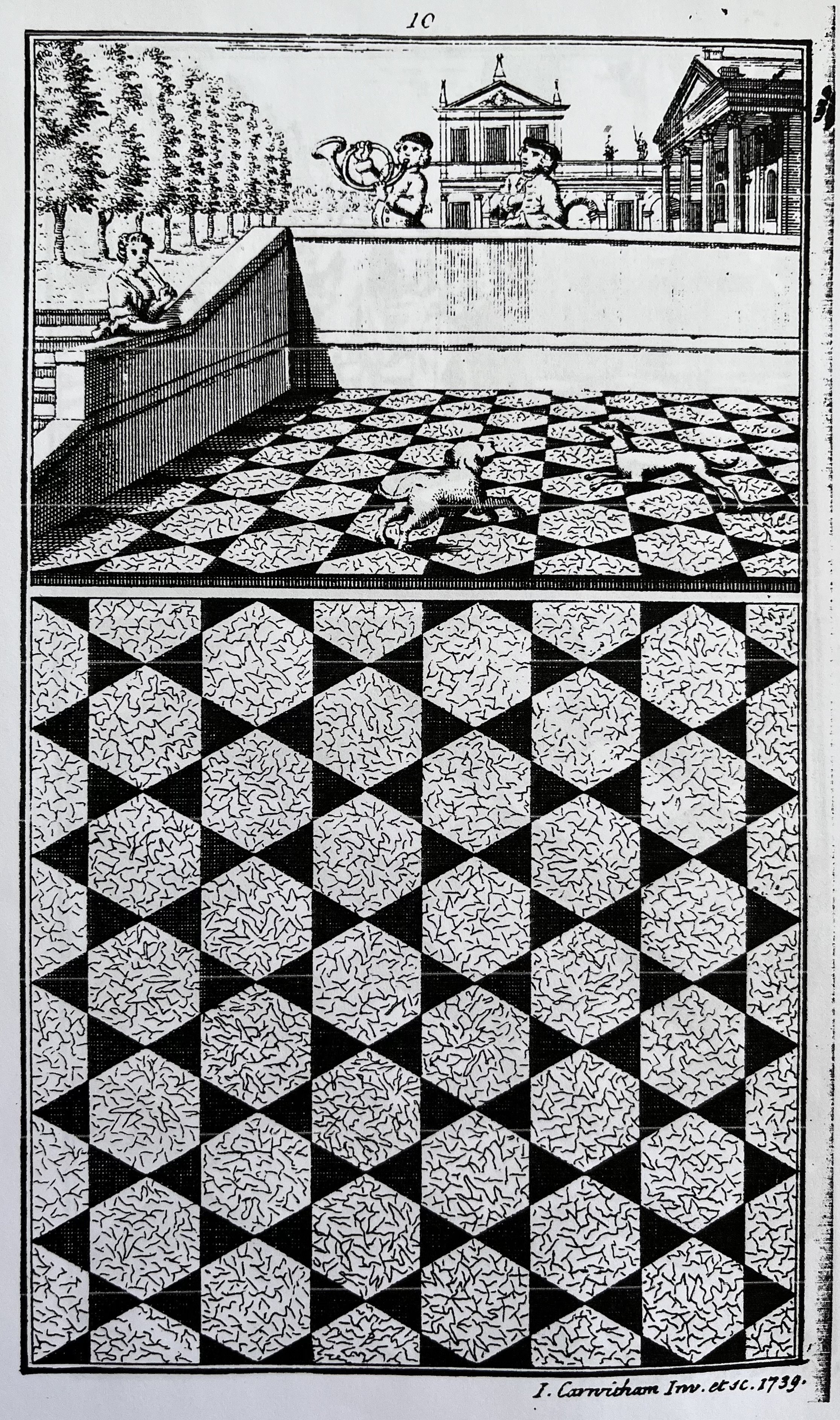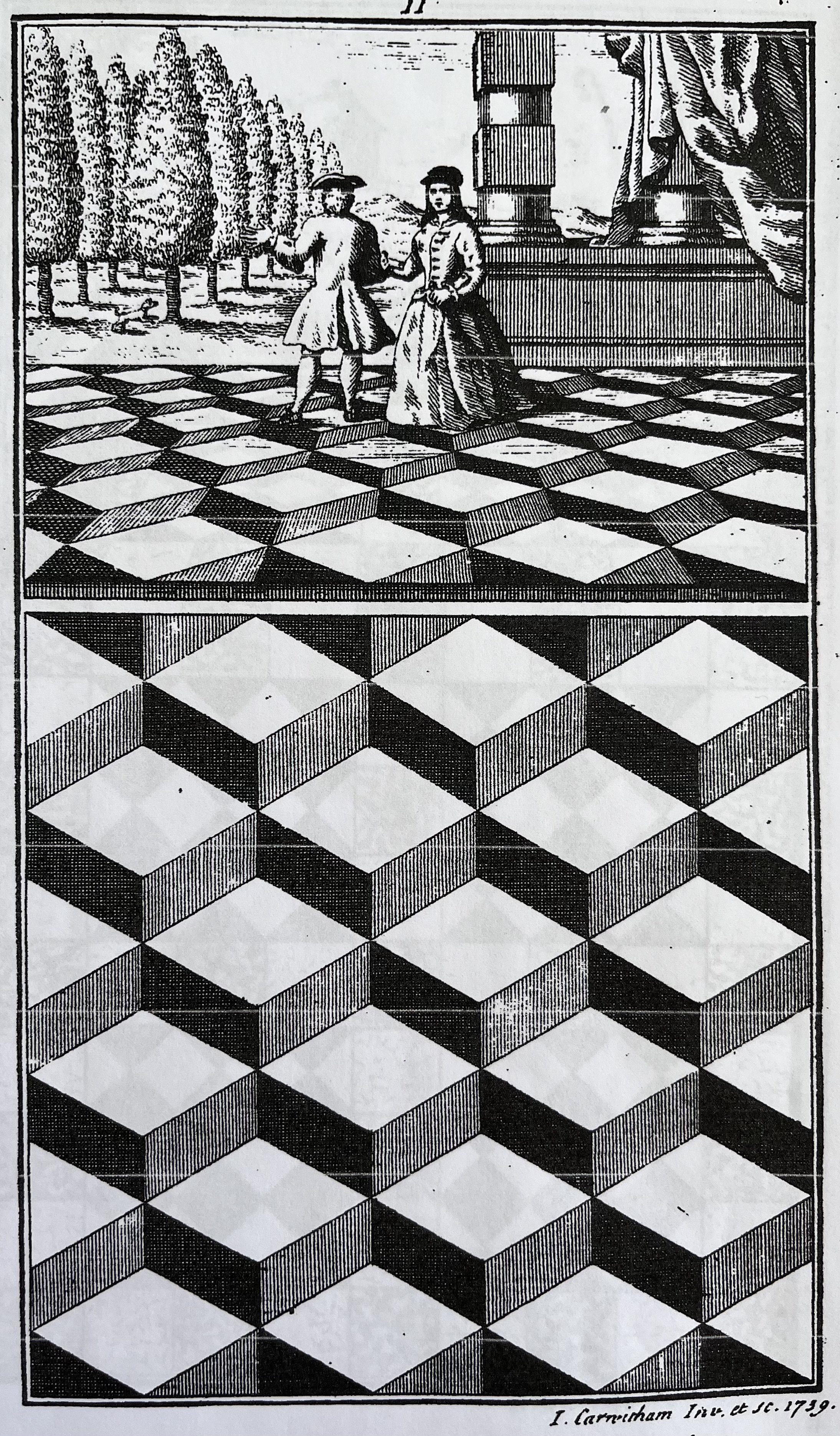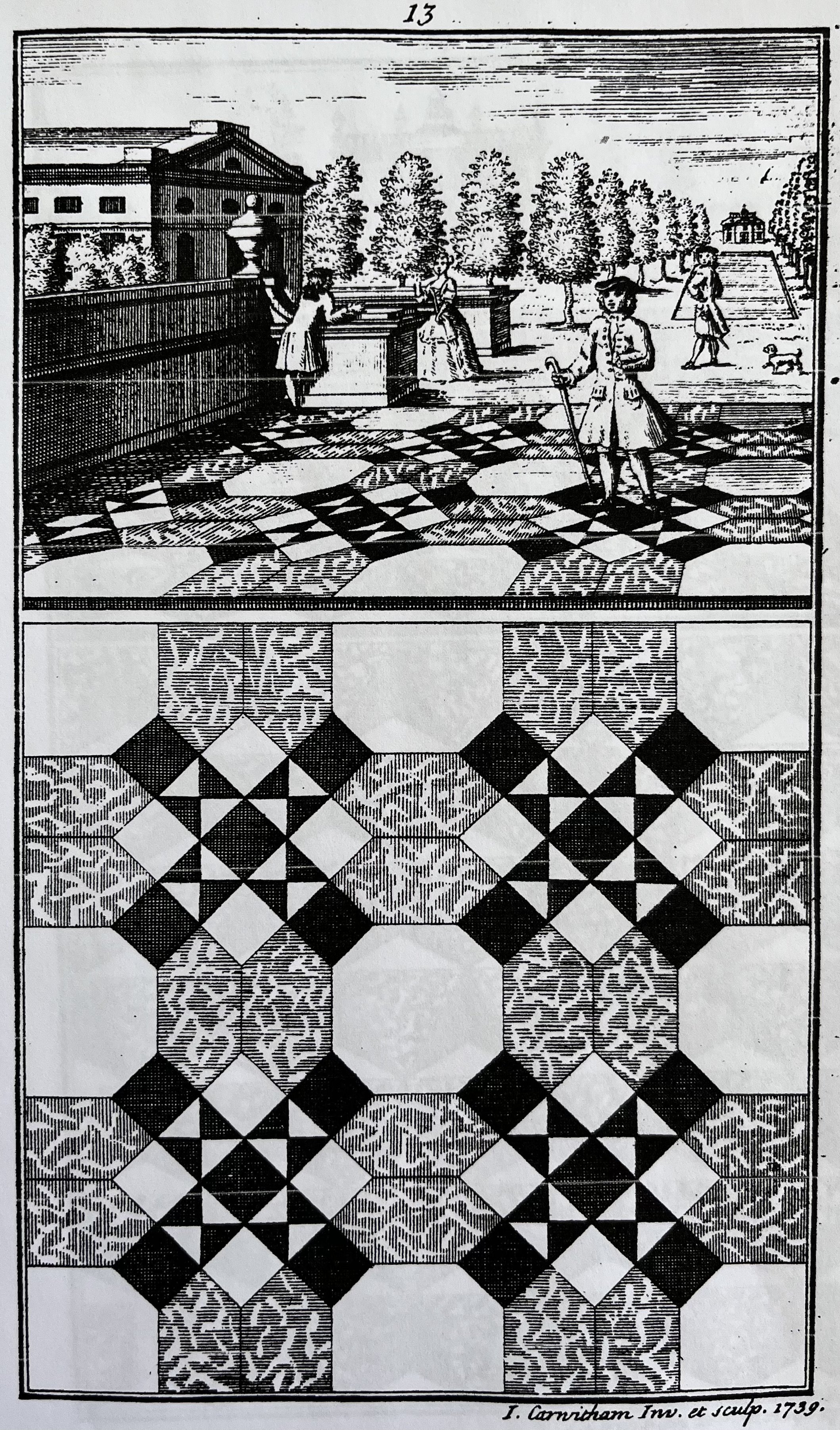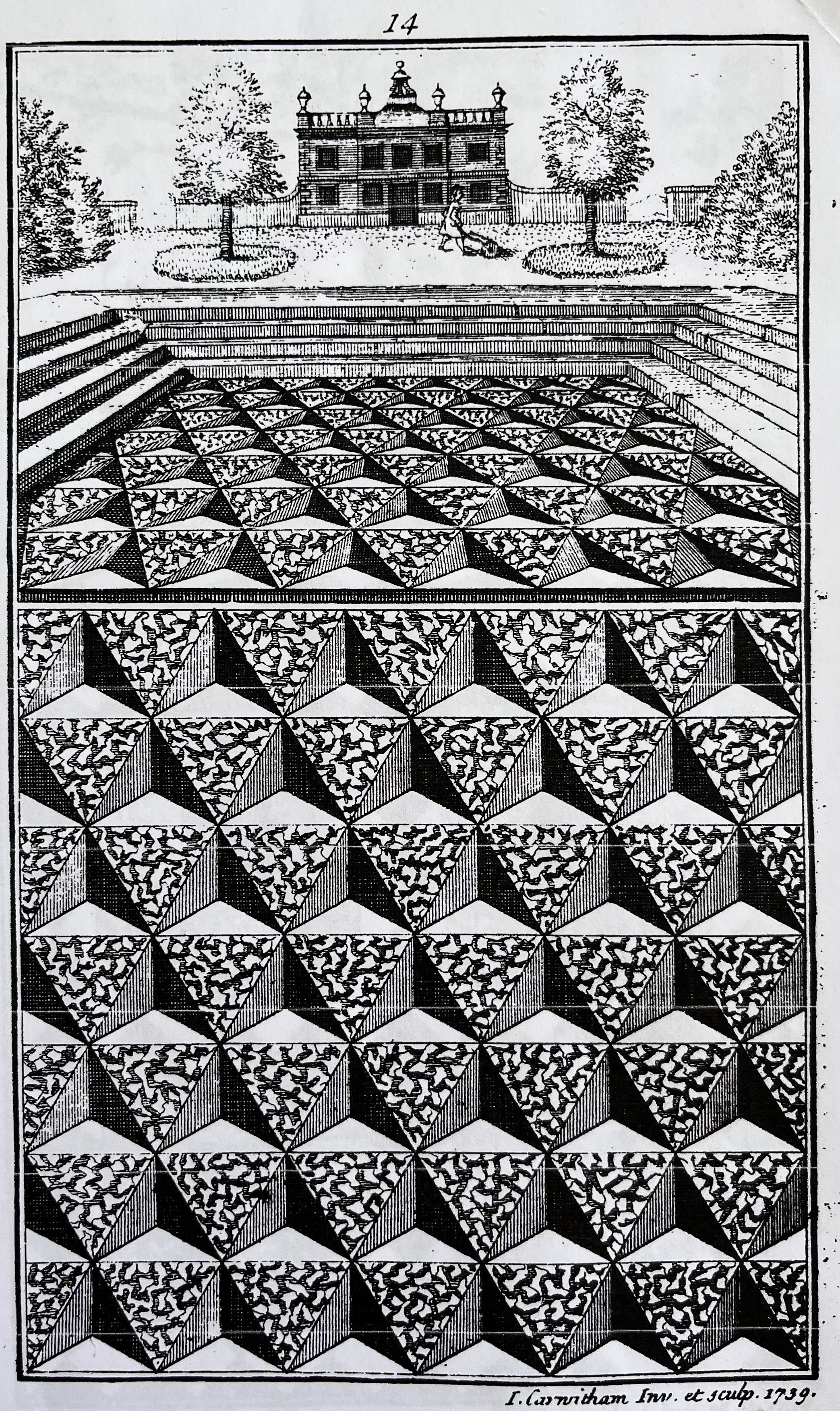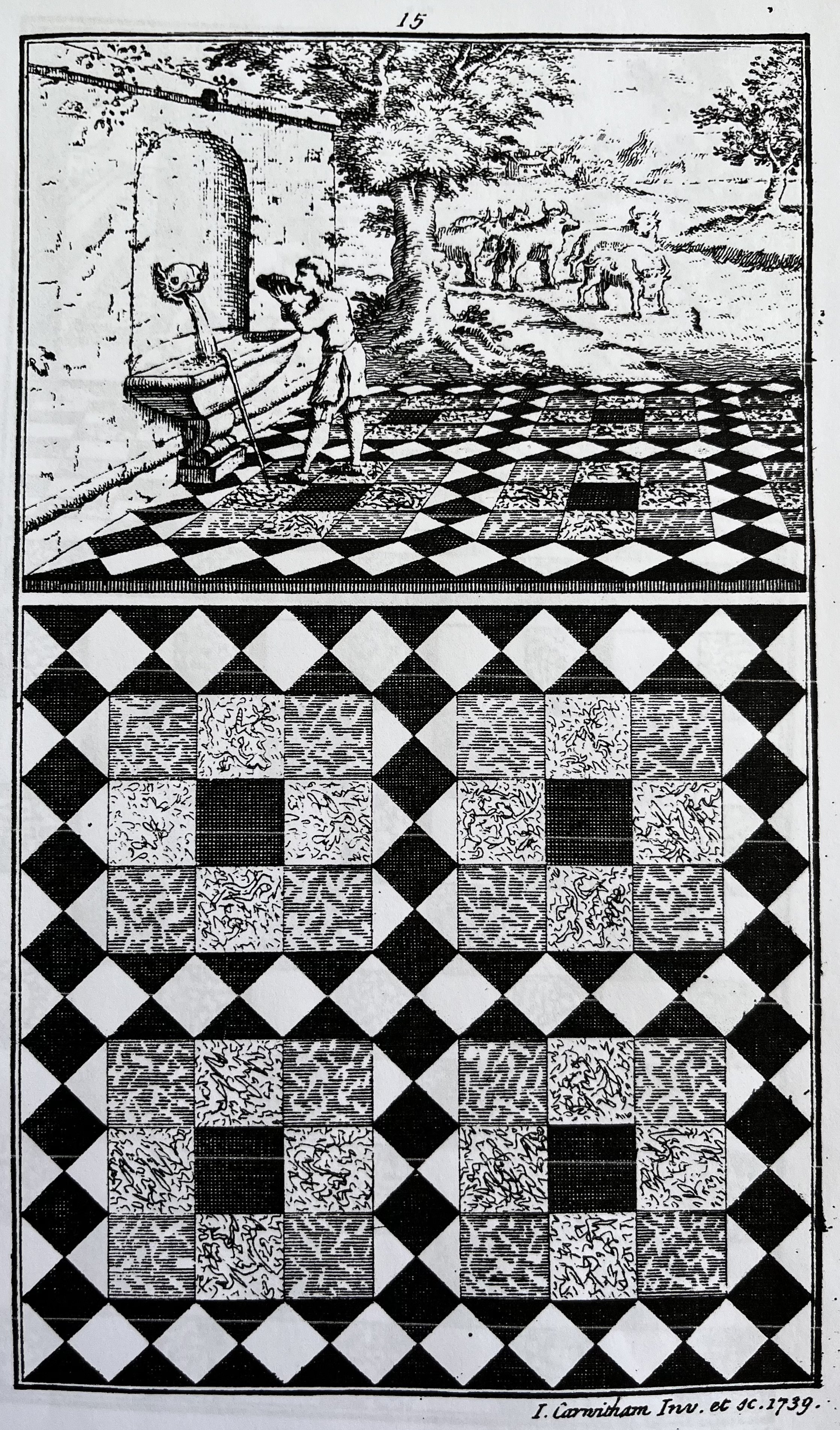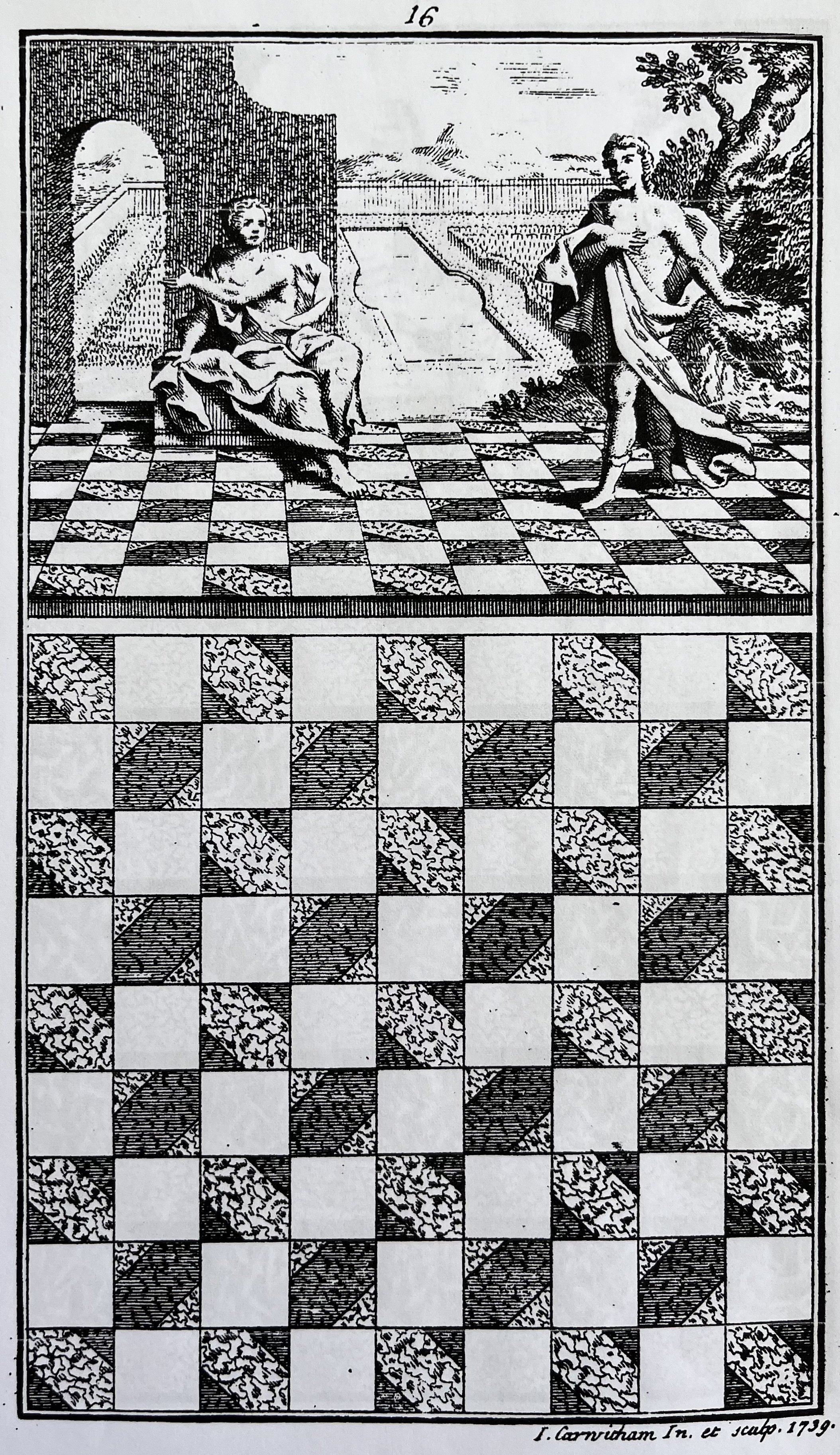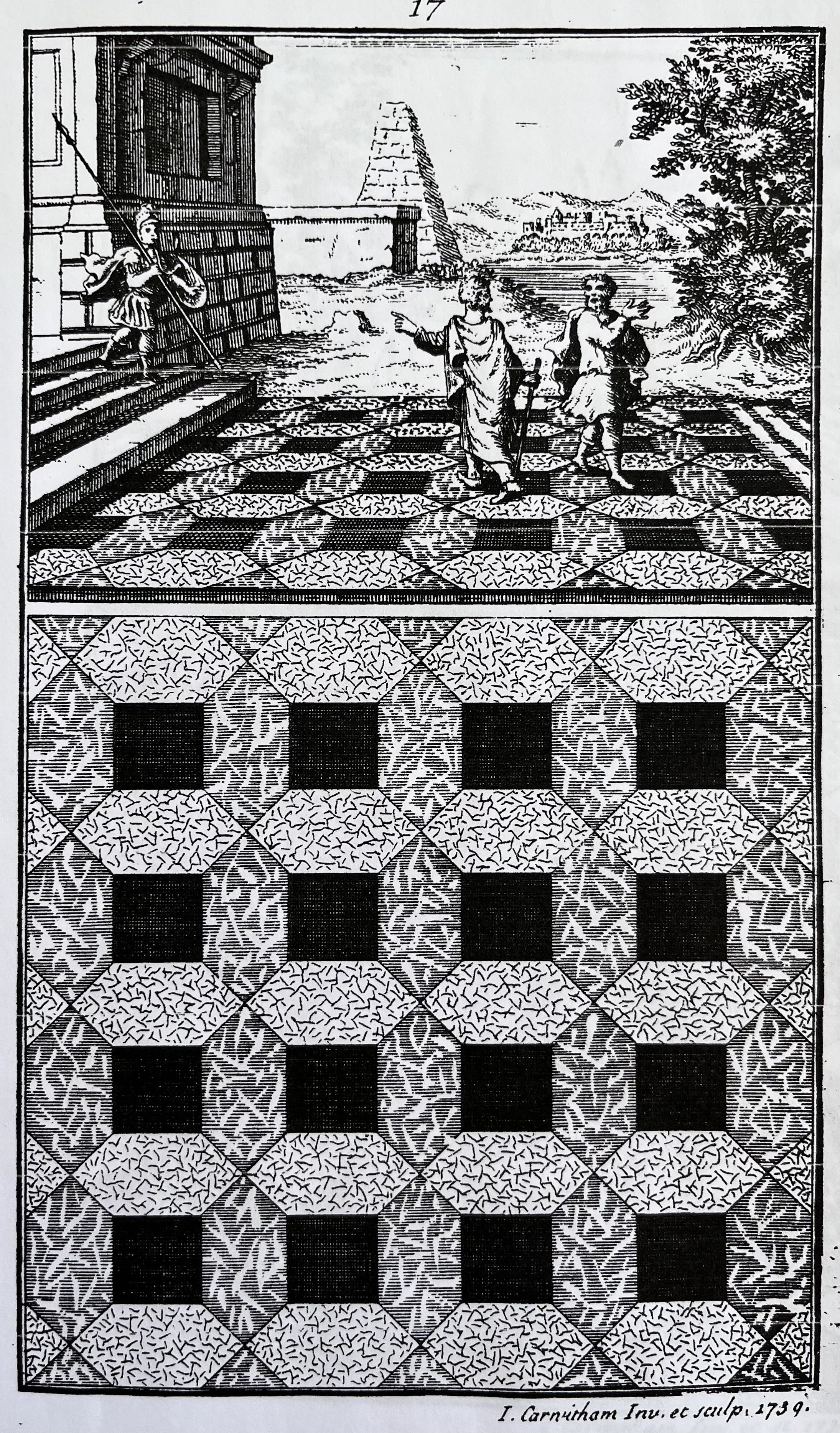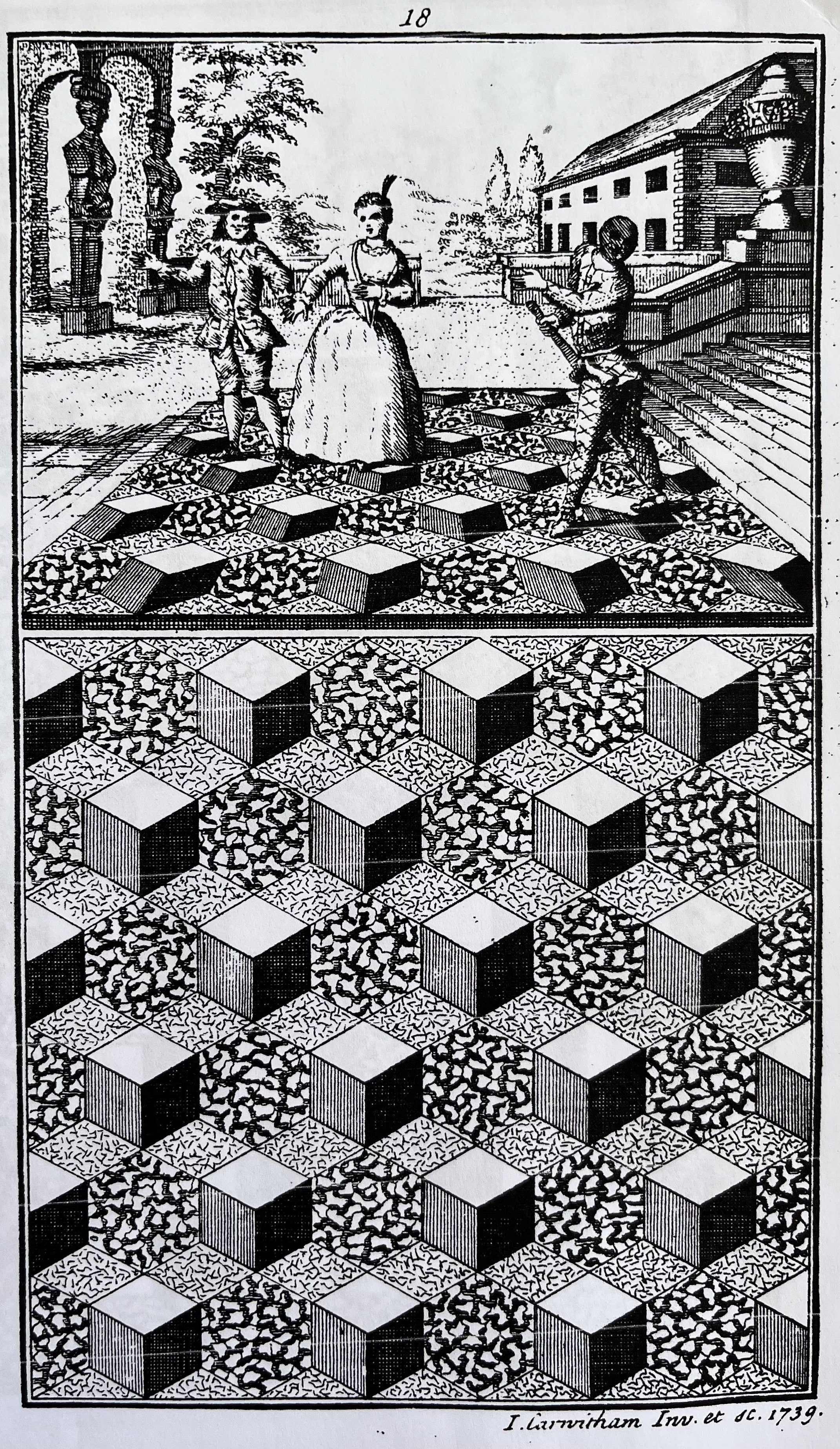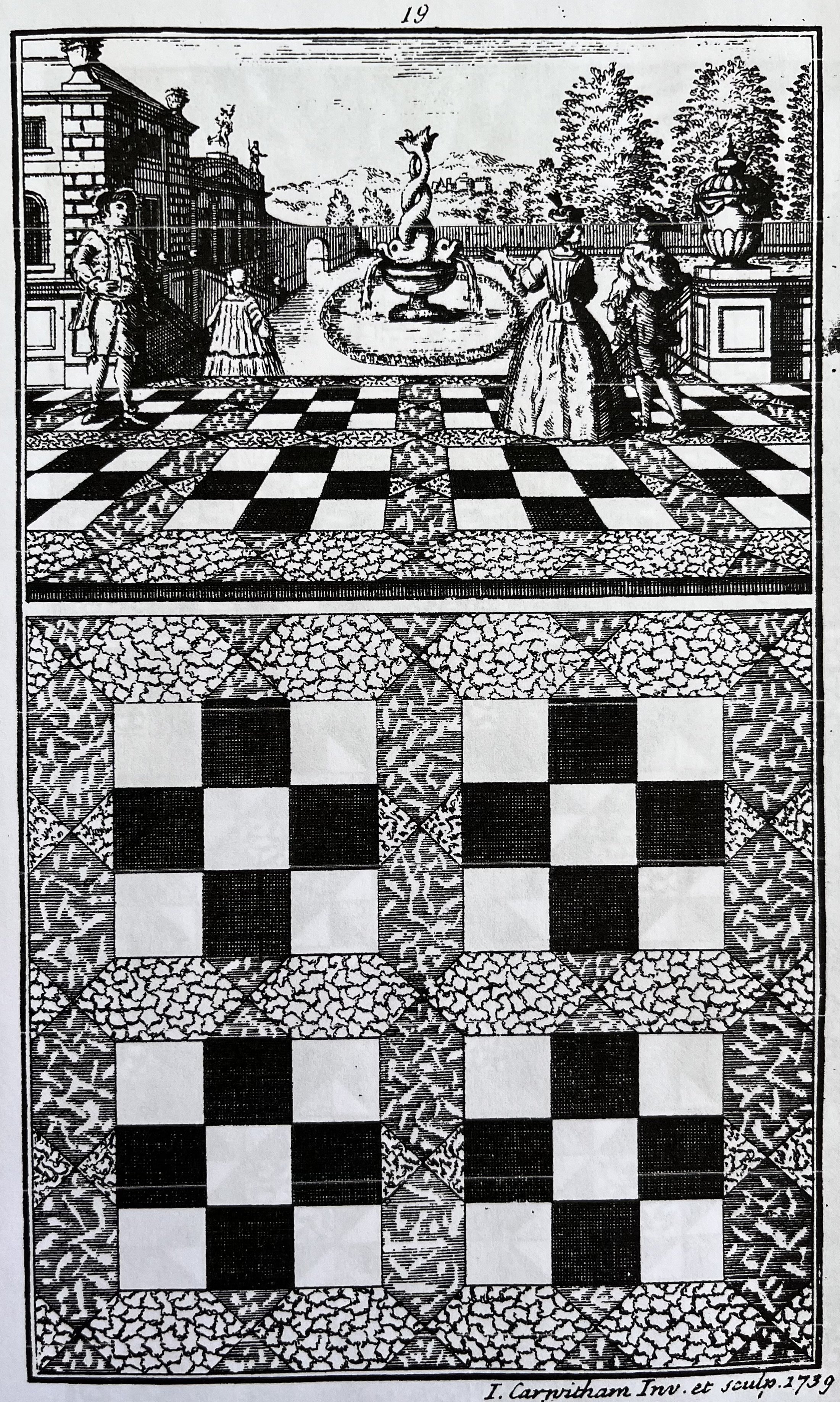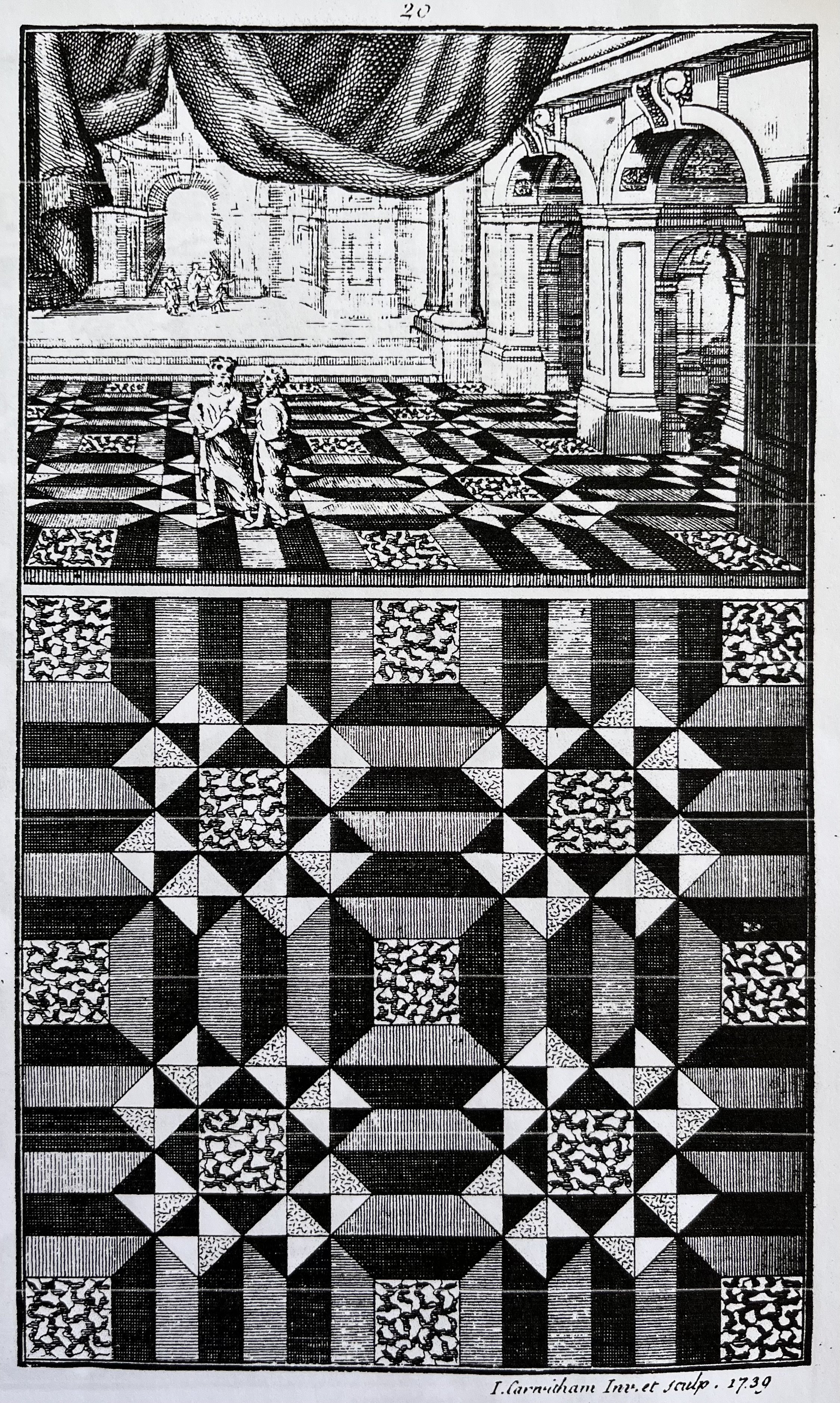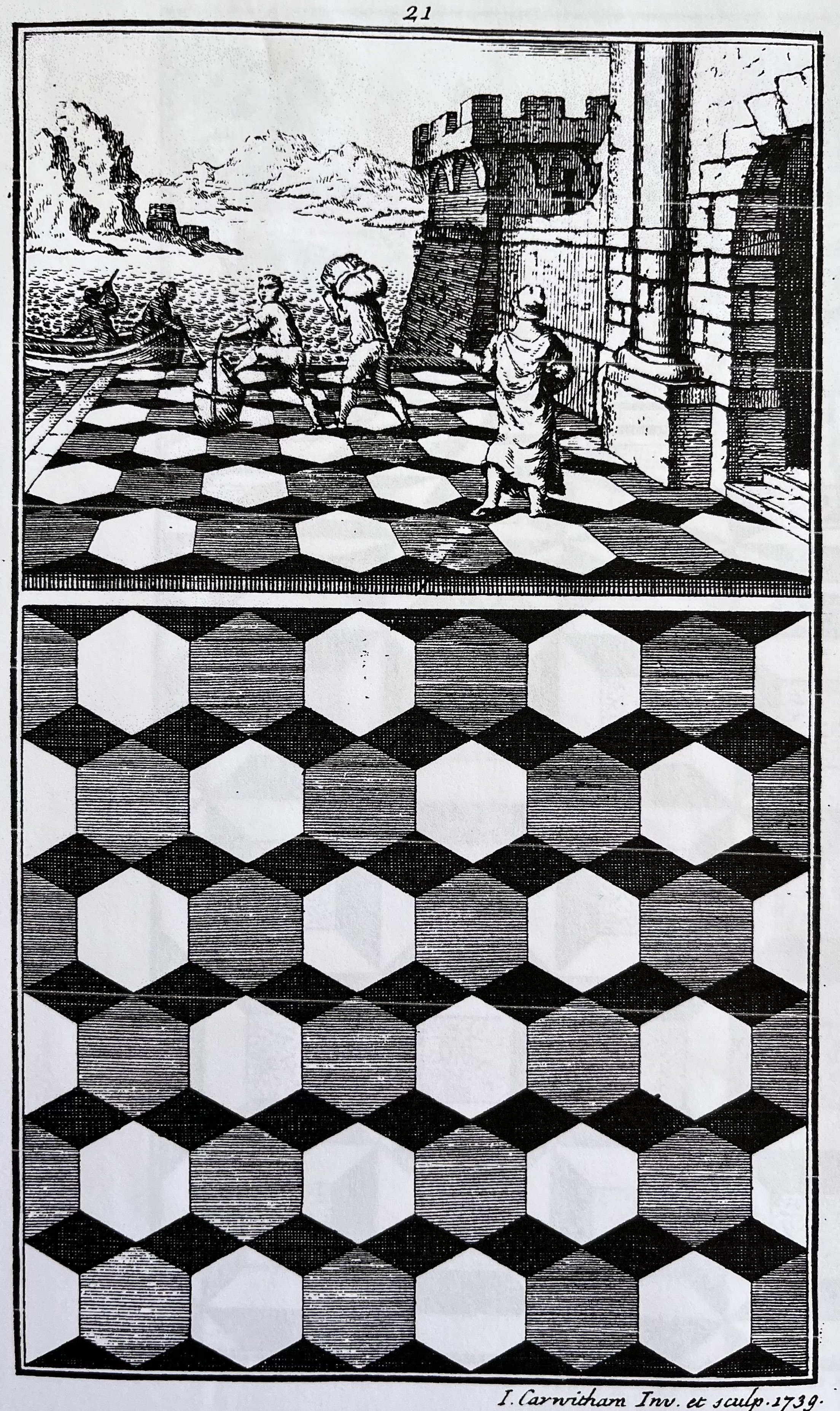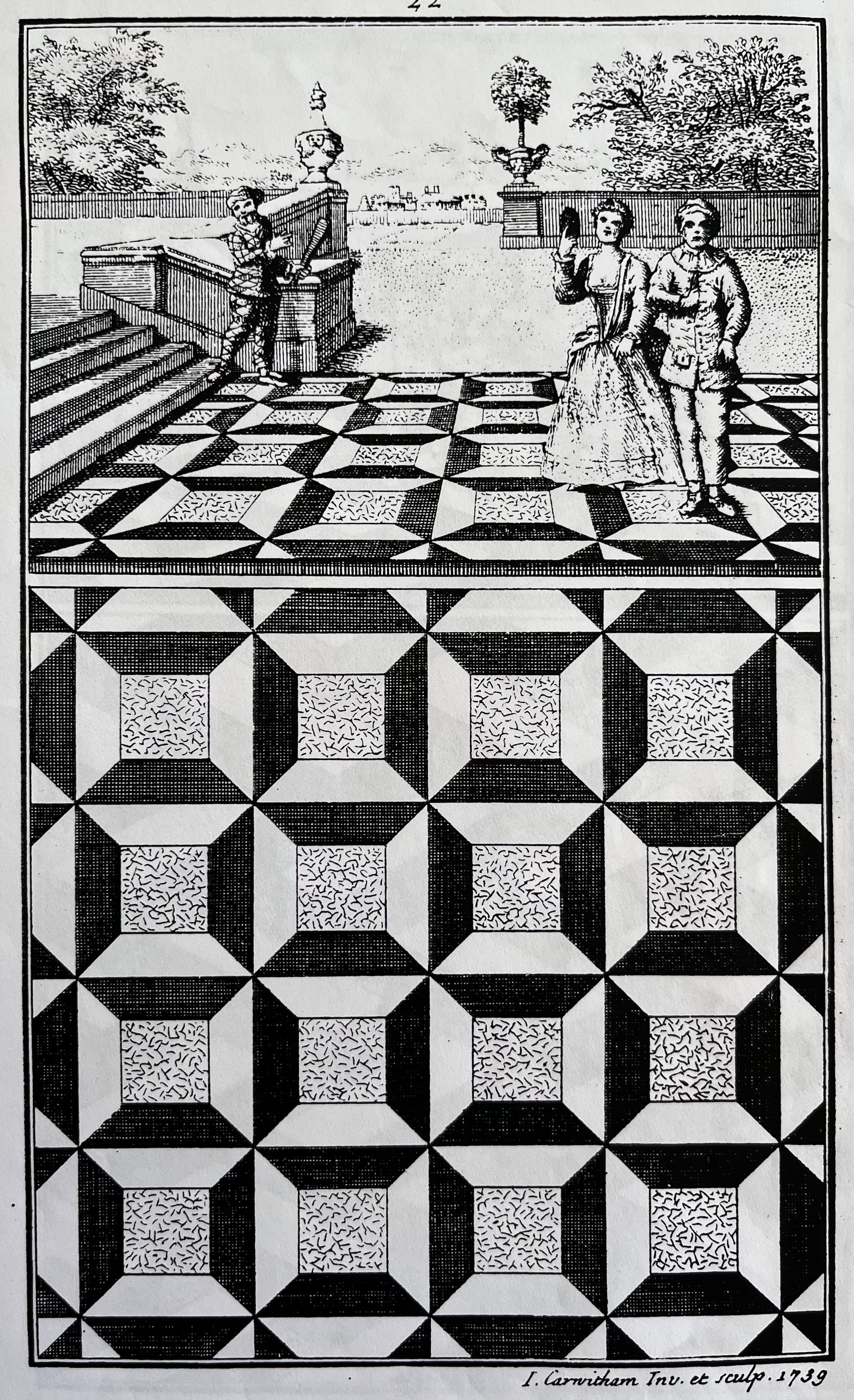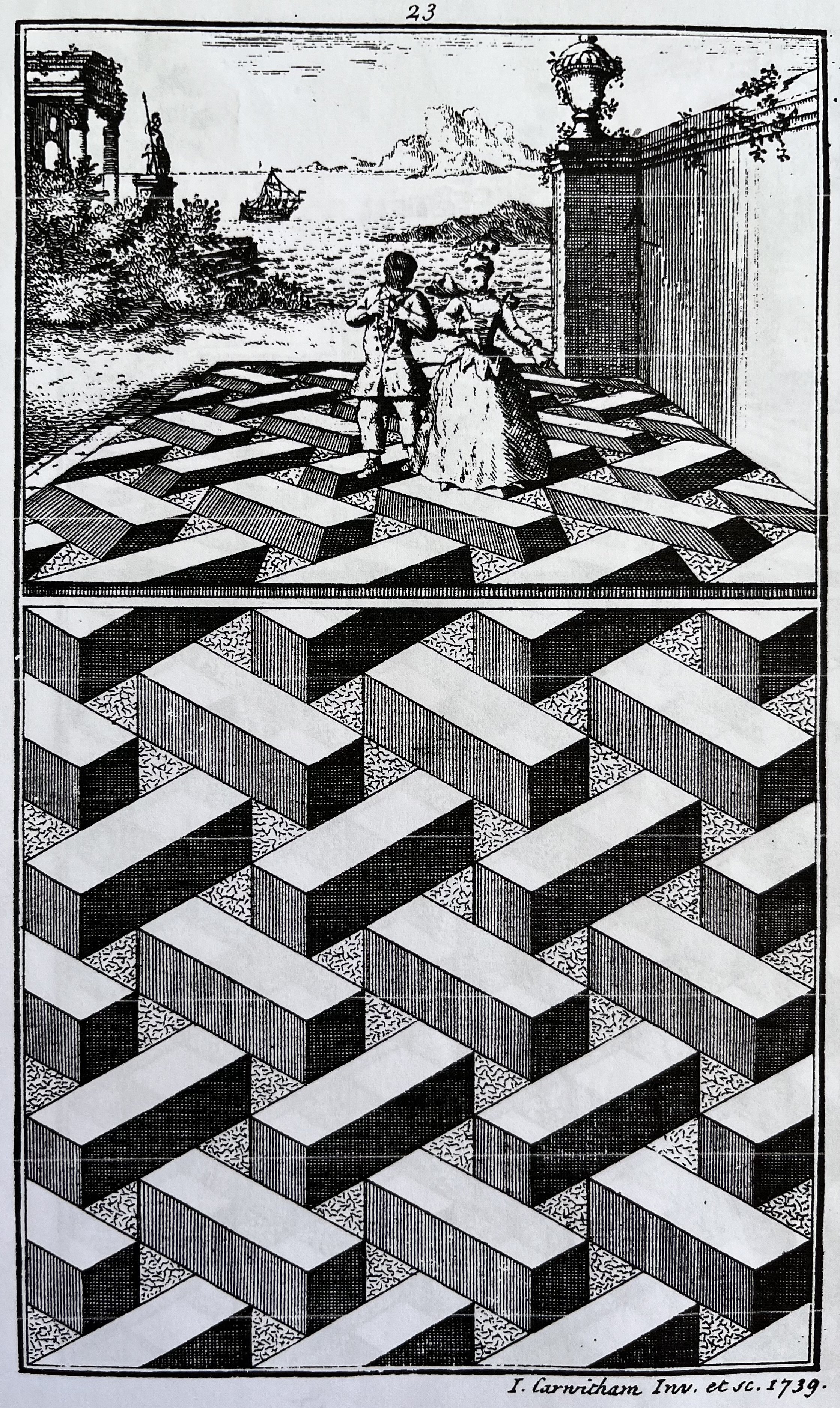Floorcloth History
Floorcloths are painted canvases used to protect and decorate floors in the same way carpets are today. They were also known as ‘oylcloths’ because the sailcloth canvas would be coated with linseed oil, pigments, and turpentine. In the early 18th century, floorcloths were being used underfoot while some carpets, or what was known as Turkey carpets, were being used to cover tables. During summer months, especially in the south, people would take up their wool rugs for storage and use floorcloths. They were better suited for hot humid climates in comparison to their counterparts. Others would cover their wood floors with wall to wall floorcloths and use rugs over top of those. Floorcloths could be found in homes and businesses and in the White House during Thomas Jeffersons presidency.
Early on, floorcloths were mostly imported from England. But the English manufacturers faced competition from businesses in New England. Floorcloths were being made by professional sign, coach, and house painters. Women, more inclined to be associated with the decorative arts, made a large contribution to the design and use of floorcloths. Designs included floral motifs, geometric patterns, and in the case of Thomas Jefferson, just a solid color. By the end of the 18th century, people could peruse catalogs from American floorcloth makers to order custom pieces of their own.
Floorcloths were (and still are) considered artistic expressions for ones home or business. A utilitarian and decorative addition. They proliferated throughout the east coast until a cheaper, more quickly manufactured product, linoleum, was introduced. The difference being linoleum has a flat factory produced look and feel, while floorcloths maintain a handmade aesthetic with a connection to the past.
This is a very brief description of the rich history of floorcloths. I will be posting more details about that history and the artisans involved in this craft in the blog.
John Carwitham
1700-1760
John Carwitham was an English engraver. He designed and engraved the following 24 illustrations for the book ‘Various Kinds of Floor Decorations represented in both Plano and Perspective’ printed in 1739. These designs were, and still are, used frequently for marble, tile, and floorcloths.
